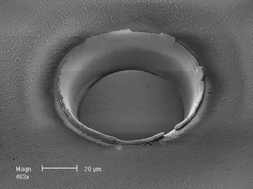Improved in situ isotope analysis of low-Pb materials using LA-MC-ICP-MS with parallel ion counter and Faraday detection
Abstract
A new analytical protocol is described allowing the measurement of Pb-isotope ratios, including the low abundance isotope 204Pb, in relatively small targets (∼100 micron) of low Pb content (1–10 ppm), such as might be encountered in the analysis of magmatic melt inclusions, for example. The analysis routine employed utilises multiple Faraday cups and two ion counters operated in static multi-collection mode. Concurrent analysis of the NIST 612 glass standard allows an external correction for mass bias, and simultaneous determination of ion counter gain, while Hg interference on 204Pb is corrected in real time by simultaneous acquisition of 200Hg in a second ion counter. Analytical precision approximates theoretical limits and it can be shown that analytical accuracy is limited primarily by ion counter gain for ratios involving 204Pb and the mass bias correction for all other ratios. We typically obtain precisions of <0.4%


 Please wait while we load your content...
Please wait while we load your content...